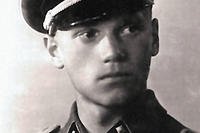"So sorry was the state of the U.S. Army in 1939 that, had Pancho Villa been alive to raid the southwestern United States, it would have been as ill-prepared to repulse or punish him as it had been in 1916."
Author Carlo D'Este wrote this in his 1995 book, "Patton: A Genius for War." While Pancho Villa was dead by 1923, then-2nd Lt. George S. Patton's raids into the American Southwest never managed to kill or capture the Mexican bandit.

Only after the outbreak of World War I did Gen. John J. Pershing, commander of the "Punitive Expedition" get reassigned. Villa retired to an estate he acquired in negotiations with the Mexican government. Villa’s ambitions ended only after he was assassinated by hired gunmen.
The United States went on to help the Triple Entente win World War I, but after the Great War ended, the interest in its 4 million men in uniform waned. In 1935, there were fewer than 119,000 troops in the U.S. military.

But a new threat was looming to both the east and west of the United States. By 1935, Adolf Hitler had consolidated power in Germany and begun rearming the German Army. In 1936, German troops reoccupied demilitarized zones in Europe, in violation of the Treaty of Versailles. That same year, Hitler and Fascist Italian dictator Benito Mussolini declared the formation of the Rome-Berlin Axis Pact.
In Imperial Japan, the United States’ former World War I ally was hungry for natural resources to feed its growing Army and Navy. By 1937, Japan was in direct conflict with both Chinese Communist and Nationalist forces in the Asian mainland. In 1940, it joined Italy and Nazi Germany in what was then called the Tripartite Pact.

When Hitler invaded Poland on Sept. 1, 1939, it sparked the outbreak of global war. The United States Army still had fewer than 200,000 men. It, too, would have to rearm itself into the "Arsenal of Democracy."
In a new book,"The Rise of the G.I. Army, 1940-1941," historian and author Paul Dickson details that rearmament. It began with a peacetime draft -- the first in American history -- with the passage of the September 1940 Selective Training and Service Act.
Some 10 million men entered military service during World War II, most of them volunteers. But in those early days, thousands of men between the ages of 21 and 34 were put into uniform before there was even a war to fight. The following year, the Army put its doctrines to the test in the Louisiana Maneuvers of 1941, testing its men, material and methods using blank ammunition and bombs of flour dropped from airplanes.

All the while, a political debate raged in the halls of Congress as to whether there should even be an Army of conscripts (whose draft enlistment was only one year long) and if they should be used to fight a war in Europe (if necessary) or sent home as the United States fell backward into isolation.
That debate raged until November 1941, when the House of Representatives rejected the disbandment of what Patton called an Army of 820,000 "civilians in khaki pants."
Those arguments came to a halt on Dec. 7, 1941. Four days later, Germany also declared war on the United States.
After the war, Gen. Dwight D. Eisenhower, who participated in the Louisiana Maneuvers, credited those exercises with helping the United States win the war on both fronts.

Dickson's book covers the buildup to conscription, the Louisiana Maneuvers and even the nascent U.S. Army's trial by fire in North Africa in one expansive, thoroughly researched and compelling volume. "The Rise of the G.I. Army, 1940-1941: The Forgotten Story of How America Forged a Powerful Army Before Pearl Harbor" is on sale now.
-- Blake Stilwell can be reached at blake.stilwell@military.com. He can also be found on Twitter @blakestilwell or on Facebook.
Want to Learn More About Military Life?
Whether you're thinking of joining the military, looking for post-military careers or keeping up with military life and benefits, Military.com has you covered. Subscribe to Military.com to have military news, updates and resources delivered directly to your inbox.










